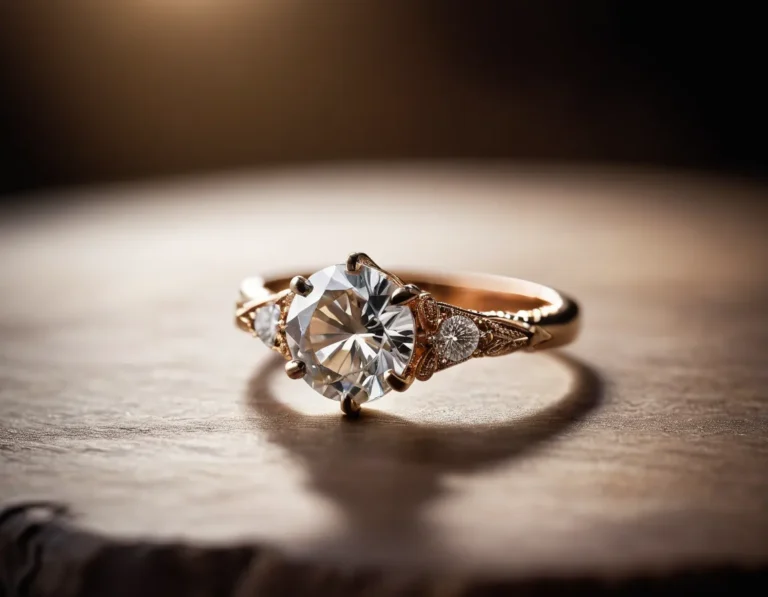Diamonds are a significant purchase, whether for an engagement ring, a special gift, or an investment. This guide will help you navigate the complex world of diamond buying with confidence. We’ll cover essential tips and common pitfalls to avoid to ensure you make an informed decision.
1. Understanding the 4 Cs
The 4 Cs are the most crucial factors to consider when buying a diamond: Carat, Cut, Color, and Clarity. These characteristics determine a diamond’s quality and value.
Carat
Carat refers to the weight of the diamond. Larger diamonds are rarer and more expensive. However, carat weight alone doesn’t determine a diamond’s value.
| Carat Weight | Description | Price Range (Approx.) |
|---|---|---|
| 0.25 – 0.50 | Small | $500 – $1,500 |
| 0.50 – 1.0 | Medium | $1,500 – $5,000 |
| 1.0 – 2.0 | Large | $5,000 – $20,000 |
| 2.0+ | Very Large | $20,000+ |
Cut
Cut affects a diamond’s brilliance. It’s about how well the diamond is cut, not its shape. The cut determines how light reflects off the diamond.
| Cut Grade | Description |
|---|---|
| Excellent | Best brilliance |
| Very Good | High brilliance |
| Good | Average brilliance |
| Fair | Below average brilliance |
| Poor | Dull, less sparkle |
Color
Diamonds come in various colors, with the most valuable being colorless. The GIA color scale ranges from D (colorless) to Z (light yellow or brown).
| Color Grade | Description |
|---|---|
| D-F | Colorless |
| G-J | Near colorless |
| K-M | Faint yellow |
| N-R | Very light yellow |
| S-Z | Light yellow |
Clarity
Clarity measures the presence of internal or external flaws (inclusions and blemishes). The fewer the flaws, the higher the clarity grade.
| Clarity Grade | Description |
|---|---|
| FL | Flawless |
| IF | Internally Flawless |
| VVS1-VVS2 | Very, Very Slightly Included |
| VS1-VS2 | Very Slightly Included |
| SI1-SI2 | Slightly Included |
| I1-I3 | Included |
2. Choosing the Right Shape
Diamonds come in various shapes, each with its unique appeal. The shape you choose should reflect personal style and preference.
| Shape | Description |
|---|---|
| Round | Classic and most brilliant |
| Princess | Modern and edgy |
| Oval | Elegant and elongating |
| Marquise | Vintage and dramatic |
| Pear | Unique and graceful |
| Cushion | Soft and romantic |
| Emerald | Sophisticated and elegant |
3. Setting a Budget
Setting a budget is essential. It helps narrow down options and ensures you don’t overspend. Here are some tips:
- Determine your priorities: Decide which of the 4 Cs is most important to you.
- Consider long-term value: Think about the resale value and how the diamond will hold its worth over time.
- Factor in the setting: Remember that the ring setting can also affect the total cost.
4. Certification and Grading Reports
Always buy certified diamonds. Certification from reputable labs like GIA (Gemological Institute of America) or AGS (American Gem Society) ensures you’re getting a genuine and high-quality diamond.
| Lab | Description |
|---|---|
| GIA | Most trusted and stringent |
| AGS | Highly reputable |
| IGI | Widely recognized |
| EGL | Varies, sometimes lenient |
5. Evaluating Diamond Cut Quality
A well-cut diamond reflects light beautifully. Even with a lower color or clarity grade, a good cut can make a diamond appear stunning.
Tips for Evaluating Cut Quality
- Look for symmetry: Well-cut diamonds have balanced facets.
- Check the polish: A good polish enhances a diamond’s sparkle.
- Use a loupe: A magnifying glass helps inspect cut quality.
6. Considering Diamond Fluorescence
Fluorescence is the diamond’s reaction to UV light. It can impact a diamond’s appearance and value.
| Fluorescence Grade | Description |
|---|---|
| None | No effect on appearance |
| Faint | Slight, often unnoticeable |
| Medium | Can add a blue hue |
| Strong | Noticeable, can affect value |
| Very Strong | Very noticeable, often cheaper |
7. Avoiding Common Pitfalls
Buying a diamond can be tricky. Here are some common pitfalls to avoid:
Overpaying for Size
Bigger isn’t always better. A slightly smaller diamond with a better cut can appear larger and more brilliant.
Ignoring the 4 Cs Balance
Don’t focus solely on one C. Balance all four to get the best value.
Skipping Certification
Non-certified diamonds might seem cheaper but can be risky. Always buy certified diamonds.
Falling for Marketing Gimmicks
Avoid being swayed by sales pitches or discounts. Do your research and stick to your budget.
Not Comparing Prices
Prices can vary widely between sellers. Compare prices to ensure you’re getting the best deal.
8. Shopping Tips
Buy from Reputable Jewelers
Purchase from well-known, reputable jewelers who offer certified diamonds.
Online vs. In-Store
Both options have pros and cons. Online shopping often provides better prices and more selection, but in-store shopping allows you to see the diamond in person.
Understand Return Policies
Ensure the jeweler has a good return policy in case you change your mind.
Conclusion
Buying a diamond is a significant investment. Understanding the 4 Cs, setting a budget, and avoiding common pitfalls can help you make an informed decision. Always buy certified diamonds and compare prices to get the best value. With these tips, you’ll find a beautiful diamond that meets your needs and budget.
This comprehensive guide is designed to help you navigate the diamond-buying process with confidence. By considering all these factors, you can make a wise investment in a diamond that will bring joy for years to come.
